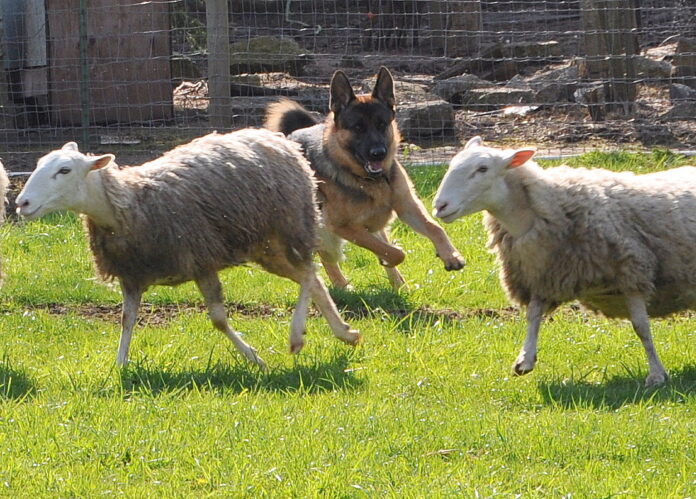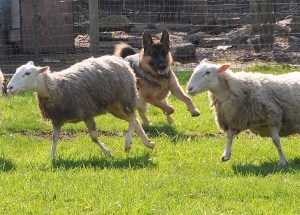
BY FRAN JEWELL

I am approached daily by dog owners wanting to eliminate behaviors in their dogs that are “instinctual.” An instinctual behavior is one that comes hard-wired in the dog when they are born. The behavior is inherited from the dog’s parents and ancestors.
All dogs possess what is called “prey drive.” This is instinctual behavior passed along from wolves for survival. In a very basic description, prey drive occurs when the wolf smells or sees game, then follows either the scent or vision, attacks the game, shakes it, kills it, and eats it with the pack.
What makes dogs different from wolves is that we humans have “domesticated” dogs from wolves by selecting certain aspects of that “prey drive” and then breeding the dogs that possessed those specific aspects in an effort to use them for human benefit. For example, our beloved Labrador retriever has been bred for his scenting or “hunting” behaviors, then his interest in returning the bird (prey) to his owner (pack). Other breeds, such as sight hounds, use their eyes to chase the prey for food for their human. Then there are the herding breeds, such as Aussies and border collies, that will chase the livestock (prey) to assist the owner in moving the sheep or cattle to a desired location.
When we have mixed-breed dogs whose heredity is unknown, we don’t always know what degree of that instinctual “prey drive” they possess until they mature.
When we select a dog for our family, careful evaluation should be made to select a dog with the appropriate “drive” for our family. For instance, a herding dog that chases small objects and rounds them up may not be the best choice if you have small children. Those dogs may chase and nip children simply because of their instinctual behaviors.
Each dog is an individual, even within a specific breed, and may possess a greater or lesser degree of instinctual behavior than others. How many Labrador retrievers do you know that have no interest in hunting?
When we have a dog with a stronger degree of these behaviors, we must understand that this is INSTINCTUAL and may be able to be CONTROLLED with extensive training, but can never be eliminated. Choosing a dog because of his color, hair length, or cute floppy ears is not usually the best way to choose a dog for your family. Understanding what his potential instinctual behaviors are and if those will fit for your family is truly at the heart of the matter. If you find yourself with a dog with instinctual behaviors that are difficult to live with, extensive training may be your best assurance to control it.
Fran Jewell is an Idaho Press Club award-winning columnist, IAABC-certified dog behavior consultant, NADOI-certified instructor #1096 and the owner of Positive Puppy Dog Training, LLC, in Sun Valley. For more information, visit www.positivepuppy.com or call (208) 578-1565.


